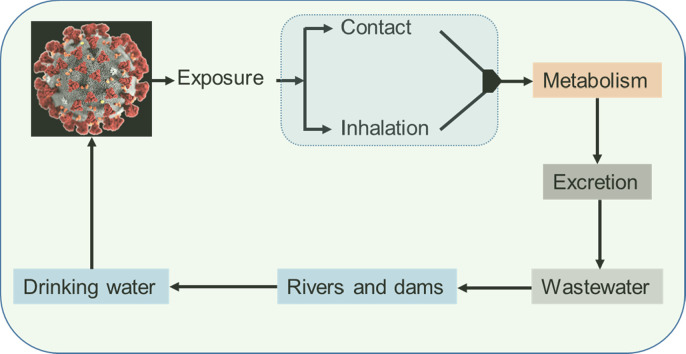- Record: found
- Abstract: found
- Article: not found
Systematic assessment of SARS-CoV-2 virus in wastewater, rivers and drinking water – A catchment-wide appraisal

Read this article at
Abstract
Human coronaviruses (HCoVs) attracted attention in 2002 with the severe acute respiratory syndrome (SARS) outbreak, caused by the SARS-CoV virus (mortality rate 9.6%) and gained further notoriety in 2012 with the Middle East respiratory syndrome (MERS) (mortality rate 34.3%). Currently, the world is experiencing an unprecedented crisis due to the COVID-19 global pandemic, caused by the SARS-CoV-2 virus in 2019 (estimated mortality rate 10%). The virus can pass to the faeces of some patients, as was the case of SARS-CoV and MERS-CoV viruses. This suggests that apart from the airborne (droplets and aerosols) and person-to-person (including fomites) transmission, the faecal–oral route of transmission could also be possible for HCoVs. In this eventuality, natural water bodies could act as a virus reservoir of infection. Here, the temporospatial migration and attenuation of the SARS-CoV-2 virus in municipal wastewater, the receiving environment, and drinking water, is evaluated, using the polymerase chain reaction (PCR), in the South African setting. SARS-CoV-2 viral RNA was identified in raw wastewater influent but was below the detection limit in the latter treatment stages. This suggests that the virus decays from as early as primary treatment and this could be attributed to wastewater's hydraulic retention time (2–4 h), composition, and more importantly temperature (>25 °C). Therefore, the probability of SARS-CoV-2 virus transportation in water catchments, in the eventuality that the virus remains infective in wastewater, appears to be low in the South African setting. Finally, catchment-wide monitoring offers a snapshot of the status of the catchment in relation to contagious viruses and can play a pivotal role in informing the custodians and downstream water users of potential risks embedded in water bodies.

